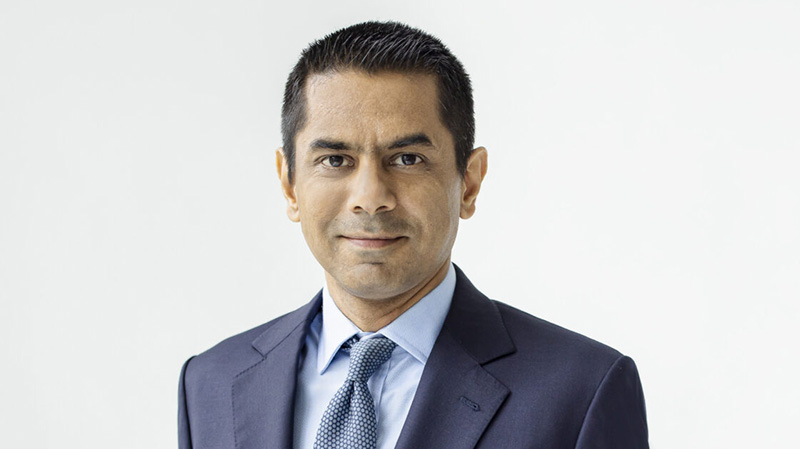For this edition of our Q&A, we quizzed Fidelity Asian Values portfolio manager Nitin Bajaj on his career path, his approach to managing the trust and where the most compelling investment opportunities in the region can be found.
Describe your career background; how did you find your way into the asset management industry and your current role?
My father was a professor of history, but he was also a keen follower of the stock market and used to invest in shares of companies listed in India.
As a teenager I started investing some of my birthday gift money into shares – and my interest in investing grew from there. I never really thought I would make a career in investment management but at business school I met Geraldine Stewart during Fidelity’s recruiting presentation.
After listening to her I started reading Peter Lynch’s books and was fascinated by deep stock specific fundamental analysis as a basis of investing.
I guess things went well during interviews and the P-Test process (Fidelity’s recruitment process includes what’s called a P-Test where a candidate is given a stock and a few hours to produce a recommendation which is then presented to analysts/portfolio managers at Fidelity), and in 2003 I joined Fidelity’s London office as an analyst and covered food & tobacco stocks for two years as my first assignment.
What is the broad strategy you have in place for the trust?
I have been heavily influenced by Peter Lynch, Joel Greenblatt, Warren Buffett and Seth Klarman in my thinking, and I learnt a lot by observing Anthony Bolton in our London office.
However, as an investor, everyone has their own psychological idiosyncrasies as well. So my investing process evolved a bit over my first 10-12 years and I have settled on investing in companies with high returns on capital with good management teams and which are currently available at cheap prices.
This often leads me to small- and mid-cap stocks given they tend to be less followed and the probability of finding businesses that meet my investment criteria is higher in this space. As a result, I would say that the trust is invested in quality-value companies and mostly in small- and mid-cap stocks.
Which industries and countries offer the most compelling opportunities in Asia at the moment?
Our investment strategy often leads us to take contrarian positions as it is easier to find undervalued businesses in countries which are out of favour with investors. Following this philosophy, we have a significant percentage of the Trust’s portfolio in China.
When China reopened after Covid, there was a lot of optimism in the market, but it turned out that the recovery was uneven and softer than expected in many areas.
The property downcycle, geopolitics, reining in of local government spending and increasing centralisation of political power means that China remains one of the only markets where profitability has not recovered post Covid. Consequently, there is a heighted perception of risks around Chinese companies, leading to a decline in stock prices.
We agree with some of the reasons for negative sentiment around China and understand that it is difficult to predict when the economy will turn around. However, we also acknowledge the strengths of China’s economy, its people, and businesses. It is the second largest economy in the world where consumption is expanding as share of GDP. It houses a significant part of the global supply chains of most products we use in our daily lives.
Hence, we feel that these negative macro factors are transitory (as they were in the US post the housing crises of 2007-10 or in India post the policy paralysis of 2012-13). Good businesses will not only survive but will likely be in a stronger competitive position post this downturn, taking market share from their weaker peers.
This is probably the best time to be investing in China. We can buy good businesses when both expectations and valuations are low. By the time clarity emerges, we believe valuations would have moved upwards.
What are the trends or investment themes you are targeting through your stock selection?
As we discussed before, we are looking for good businesses run by competent people and buy them with a margin of safety. So, there are no themes per se but just a general tendency to not invest in risky businesses as well as not to overpay.
Can you offer an example of a recent buy, and explain the rationale?
I would caveat this answer by saying that we all make poor stock picks, but a hit rate of 60% in our industry easily puts you in the top 10%. So, take this example with these statistics in mind.
One company we have recently bought is Sun Art Retail Group. It’s the largest grocery chain in China with a market cap of US$1.9bn. What attracted me to this stock was that they have a successful history and they operate in China which still does not have a dominant grocery chain.
Additionally, this business has been disrupted in the last 3-4 years due to Covid when a lot of online retailers (like Alibaba/PDD/JD etc) entered the grocery business and destroyed the profitability of the industry. These newcomers are all losing significant amounts of money in the grocery business and all signs are that they will have to get less aggressive if they want to have a viable business in this segment.
–
ESG Congress: 19th October | RSVP HERE
Hosted at The Gherkin
The ESG Congress is back to delve into the crucial topics of Environmental, Social, and Governance practices. Hosted at the iconic Gherkin, this event promises insightful discussions and a valuable platform for networking with industry peers. Reserve your spot now by RSVPing through the provided link and be part of the sustainable portfolio transformation.
Sponsors so far include Alliance Bernstein. Federated Hermes, Impax Asset Management, Jupiter Asset Management, Natixis, Skagen and Vontobel










